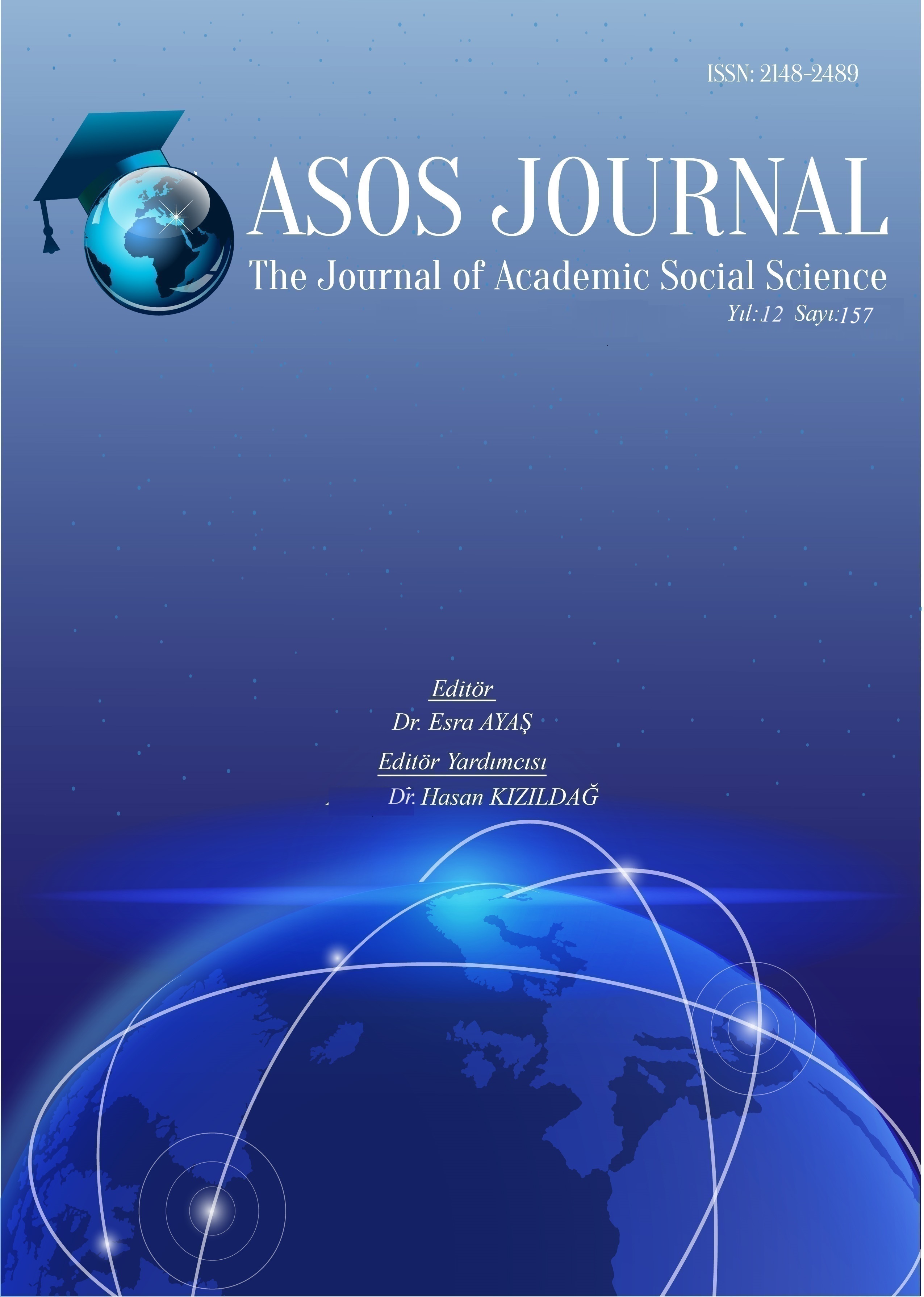Author :
Abstract
15. Yüzyılın başlarında Habeşistan’da tanınmaya başlayan kahve, 16.Yüzyılda İstanbul’a gelmiştir. Geldiği andan itibaren Osmanlı saraylılarının ve halkının ilgisini üzerine çeken kahve, ilk başlarda sert tadından dolayı sevilmemiş, sonralarında içine şeker ilave edilerek yanında su ve lokum ile servis edilmiş ve böylece tadı yumuşatılmış, yeni bir sunum şekli ortaya çıkmıştır. Dönemin padişahı tarafından yasaklatılmış, toplatılmış ve bütün bu zorluklara rağmen gizlice tüketilmeye devam edilmiştir. Zaman içerisinde kendine has bir tüketim oluşmuş, hazırlanış ve sunum teknikleri ile geliştirilmiş ve milli bir içecek haline gelmiş, son olarak ‘’Türk Kahvesi’’ adını almıştır. Bu çalışmanın amacı, Osmanlı İmparatorluğuna geldiğinde, önce saray halkı tarafından tüketilen fakat daha sonralarında bu tüketimin halka da yayılmasıyla toplum tarafından kolaylıkla kabul edilen, tüm yasaklara ve cezalara rağmen gizlice tüketilip zamanla yaygınlaşan ve kullanımı günümüze kadar devam ederek hızla popüler kültür haline gelen, sunumu bayramlarda ve özel etkinliklerde toplum geleneklerinde yerini almış Türk kahvesinin Osmanlı Dönemine gelişini, önemini ve yerini kavramakla birlikte, bu dönemde Kütahya’da üretilmiş olan Türk kahvesi fincanlarını incelemektir. Kahve tüketiminin yaygınlaşmasına paralel bir şekilde kahve fincanlarına olan ihtiyaçta artmıştır. İznik atölyelerinin kapanmasıyla birlikte çini üretimi Kütahyalı ustaların tekelinde iken, İznik’te görülen tek tip tasarımların yerini Kütahyalı ustaların rengarenk ve çok çeşitli tasarımlarıyla birlikte döneminin ötesinde bir tasarım anlayışıyla üretilen çini fincanları ortaya çıkmıştır. Kütahya çini fincanları kendine has stilize çiçekleri, motif ve renkleri olan, sanat tarihimizde ise üzerinde çok az araştırma ve inceleme yapılmış, günümüzde de çok az çini sanatçımız tarafından uygulanan bir Türk çini sanatımızdır. Çini sanatı içinde çok önemli bir yere sahip ve bir hayli miktarda üretimi yapılmış, Kütahyalı ustalara fincancılar da denmesine neden olan bu kahve fincanlarının araştırılıp desen ve form özellikleriyle literatürde yer alması bu araştırmanın amaçları arasındadır.
Keywords
Abstract
Coffee, which became known in Abyssinia in the early 15th century, came to Istanbul in the 16th century. Coffee, which attracted the attention of the Ottoman courtiers and people from the moment it arrived, was not liked at first because of its strong taste, but later sugar was added to it and served with water and Turkish delight, thus softening its taste, and a new form of presentation emerged. It was banned by the sultan of the time, confiscated, and despite all these difficulties, it continued to be consumed secretly. Over time, a unique consumption developed, preparation and presentation techniques were developed, and it became a national drink, finally taking the name "Turkish Coffee". The aim of this study is to understand the arrival of Turkish coffee in the Ottoman Period, its importance and place, which was first consumed by the palace people when it came to the Ottoman Empire, but later on, when this consumption spread to the public, it was easily accepted by the society, despite all the prohibitions and punishments, it was secretly consumed and spread over time, its use continued until today and quickly became popular culture, its presentation took its place in the traditions of the society during holidays and special events, and to examine the Turkish coffee cups produced in Kütahya during this period. In parallel with the widespread consumption of coffee, the need for coffee cups increased. While the production of tiles was monopolized by the masters of Kütahya with the closure of the İznik workshops, the tile cups produced with a design approach beyond their period with the colorful and diverse designs of the masters of Kütahya emerged instead of the uniform designs seen in İznik. Kütahya tile cups are a Turkish tile art with their unique stylized flowers, motifs and colors, and very little research and study has been done on them in our art history, and today they are applied by very few tile artists. Among the aims of this research is to investigate these coffee cups, which have a very important place in tile art and have been produced in large quantities, which has led to the Kütahya masters being called cup makers, and to include them in the literature with their pattern and form features.





